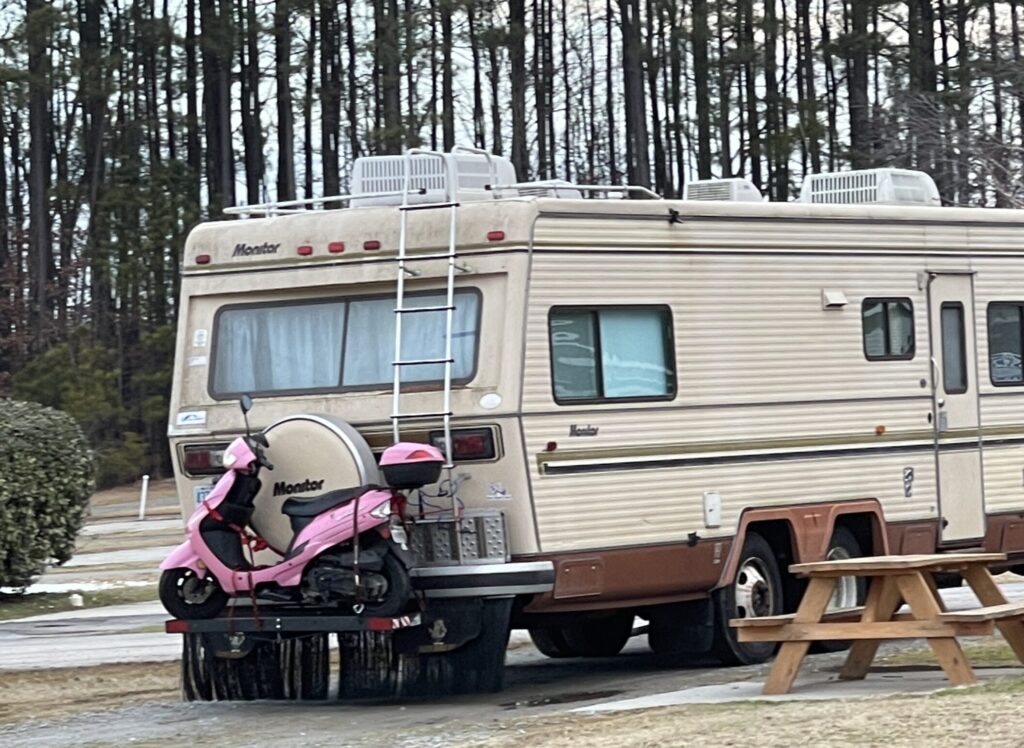
The Pros And Cons Of Flip-Down RV Storage Racks
Many RVers quickly discover that there is a limited amount of storage space in their RV, especially for larger items like coolers, bikes, generators, and extra gas cans. One great way to add extra storage space is to install flip-down RV storage racks, which mount on the back of a trailer, fifth wheel, or van.
Attachment and construction
These flip-down RV storage racks come with either two (or three) bumper-mounted brackets or a single hitch-mounted attachment. Most of them are built of steel, but a few are made of aluminum to reduce the weight and prevent rusting.
All of them have a porous floor so water drains easily away from the gear, and the floor and side rails provide unlimited tie-down points so loads can be securely anchored and/or locked onto the storage rack. Some people prefer steel racks over aluminum because thieves can cut through the aluminum floor more easily to defeat the locking mechanism.
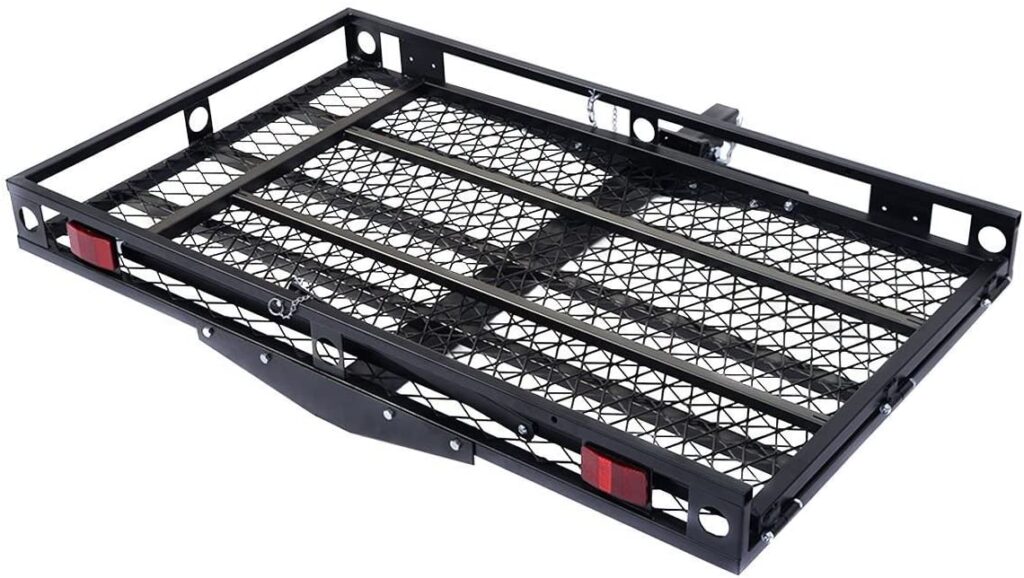
How much weight can you carry on an RV storage rack?
Many RV storage racks are approximately 60 inches wide and 24 inches deep and are rated for up to 500 pounds of gear. Some (like the bumper-mounted etrailer unit) can be purchased with a 24-inch extension to make the overall platform 84 inches wide by 24 inches deep.
When the optional extension is in use, there are three bumper-mounted brackets rather than two, but the weight rating does not increase when the extension is in use. It does, however, provide for a larger storage area for bulky items.
These RV storage racks can carry all kinds of gear, but they are frequently added to travel trailers as a convenient place to carry a generator and extra fuel containers. A Champion Generator that is both CARB (California Air Resources Board) and EPA compliant, for use in national parks and forests, weighs roughly 150 pounds. Two 5-gallon containers of gasoline weighs about 80 pounds, and a standard cooler full of food, beverages, and ice can weigh 40 pounds or more. That load total is around 270 pounds, well below the weight limit of the rack.

Don’t go over your weight limits
The racks are rated for 500 pounds, so the combination described above is well within the weight limits for the rack, but that is just one of many weights to be considered. Even putting 270 pounds of extra weight on the very back of a travel trailer or fifth wheel alters the tongue or pin weight at the coupling point with the towing vehicle.
The axle(s) of a trailer act as a fulcrum. The heavier the load, and the further that weight is away from the axles, the greater the torque is on the point of attachment (pin or tongue). If the towing vehicle is already stretched to its limits, the addition of an extra 270 pounds at the very back of the trailer can create hazardous swaying of the towed vehicle, especially in heavy wind. This extra weight on the back of the trailer could be a driving hazard.
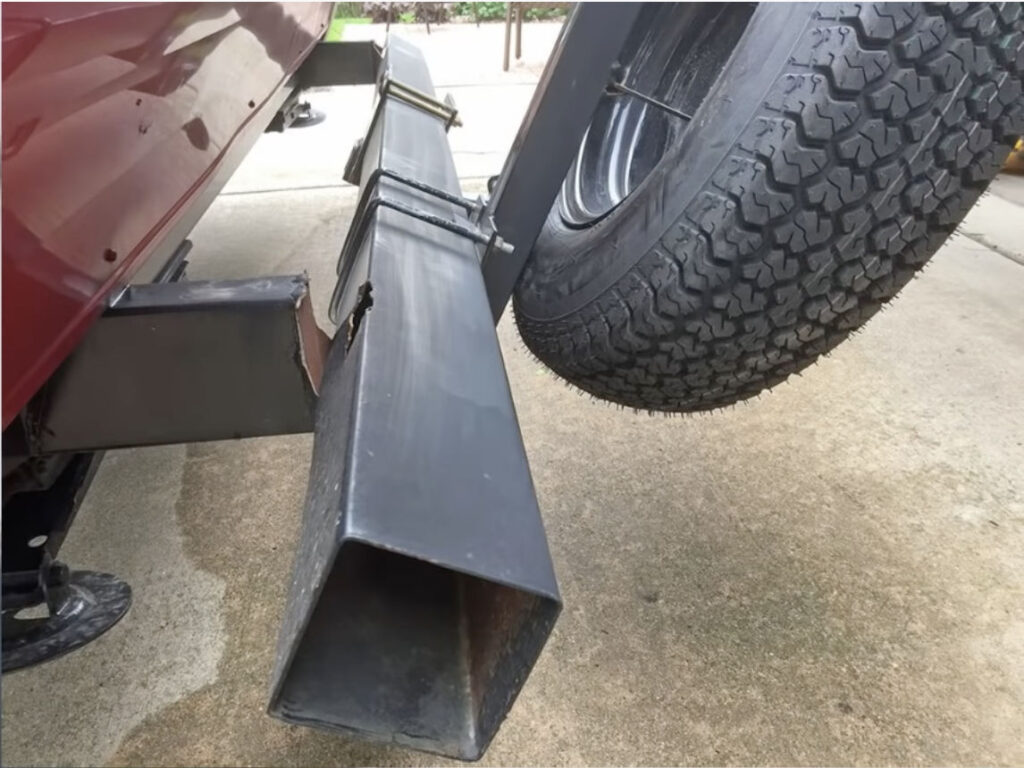
Bumper failure
Additionally, this extra weight constantly bouncing up and down on the travel trailer’s bumper can quickly create metal fatigue in the bumper welds, causing a total failure of the bumper.
The iRV2.com forums have lengthy threads about RV bumpers failing under the strain of extra weight. Additionally, many travel trailer bumpers are used to store sewer hoses, and the water from the hoses on the inside of a thin bumper quickly rusts and corrodes the bumper, further weakening the structure.
Mounting a storage rack to a trailer hitch
Some of the flip-down RV storage racks like the Ultra-Fab 48 are mounted onto an RV by using a standard trailer hitch. This type of rack is best suited for camper vans or Class B RVs since trailers do not typically have trailer hitches.
A trailer hitch could be added to a fifth wheel or travel trailer to accommodate the use of this type of flip-down storage rack, but this single point of attachment creates an even more unstable platform for storing extra gear than the bumper-mounted racks.
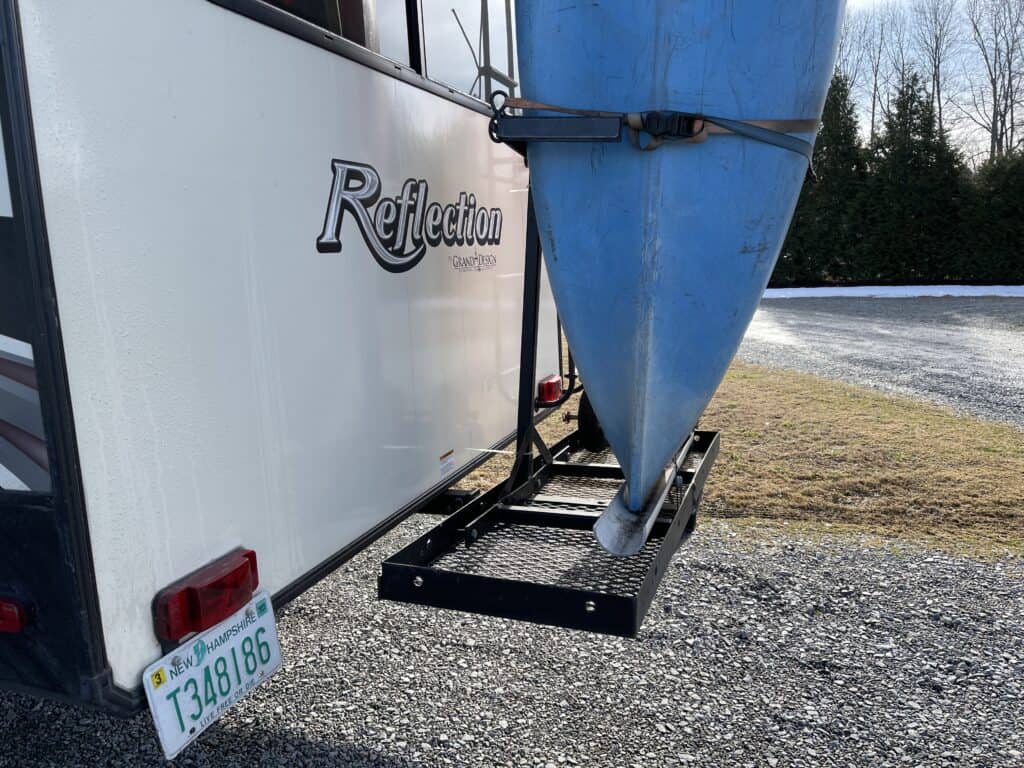
Support brackets help reinforce bumper welds
Clearly, having more than one point of attachment will help stabilize the flip-down storage rack, and there are aftermarket brackets that can be added between the RV frame and the bumper to further strengthen the bumper. But based on the various discussions in the iRV2.com forums and YouTube videos of failed bumpers, reinforcing the bumper may not provide enough extra support for 500 pounds of extra gear.
Replace weak bumpers
The safest option, if you really need the additional exterior storage space, is to replace the stock bumper with a heavy-duty steel bumper that is welded to the frame of the RV in multiple locations.
Certainly, the heavy-duty steel bumper eliminates the problem of the bumper failing. But the bigger issue of the trailer’s overall balance and the towing capacity of the tow vehicle still need to be evaluated.
Every car, SUV, and truck has a specific carrying capacity and towing capacity. Before adding a storage rack to your trailer, be sure to check your owner’s manual for these specifications.
Also, it would be prudent to have your tongue or pin weight evaluated by professionals to be sure you have a balanced towing arrangement before and after adding extra weight to the back of the towed vehicle.
Storage racks for wheelchairs and scooters
Flip-down RV storage racks are very popular, and there are many compelling reasons to use them. Not only do these companies make storage racks for RVs, but they also make these racks for power wheelchairs and scooters. These types of racks have a ramp up one side so the wheelchair can be driven up to the platform, and there are many ways to tie down or secure the scooter or wheelchair. These racks even come with a light on the rail to help load and unload the power devices at night.
But regardless of what type of equipment you want to put on the storage rack, the most important consideration is how best to manage all the extra weight.
- Will the bumper support it?
- Will the front to back balance of the trailer be negatively impacted?
- Will the extra weight put a strain on the coupling device?
- Can the load withstand constant bouncing and jarring?
- And will the towing vehicle have enough power to tow the trailer with the extra weight on the back?
RVers looking for valuable how-to information have learned to go to the experts. Forums such as iRV2.com and blog sites like RV LIFE, Do It Yourself RV, and Camper Report provide all the information you need to enjoy your RV. You’ll also find brand-specific information on additional forums like Air Forums, Forest River Forums, and Jayco Owners Forum.


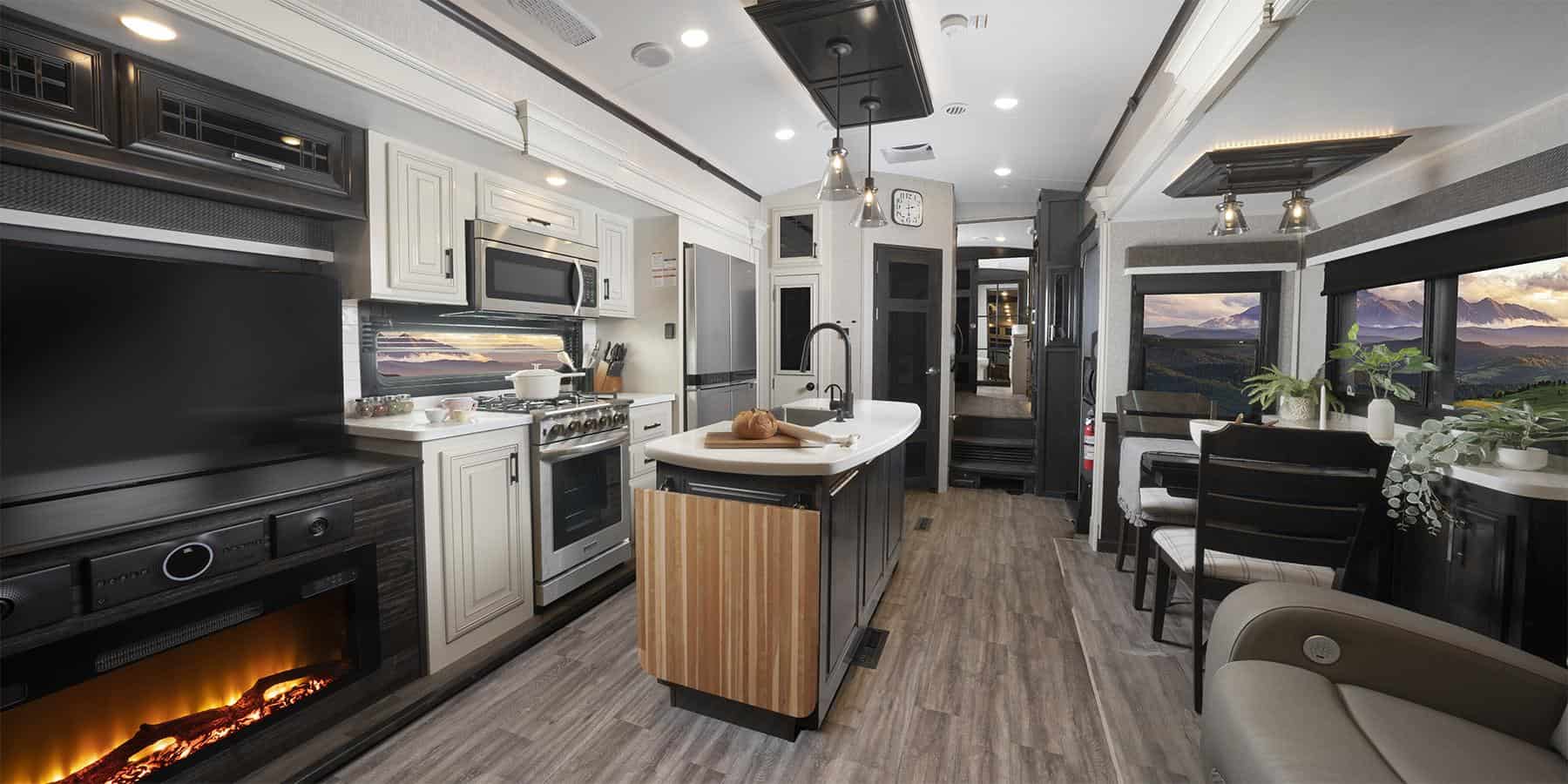
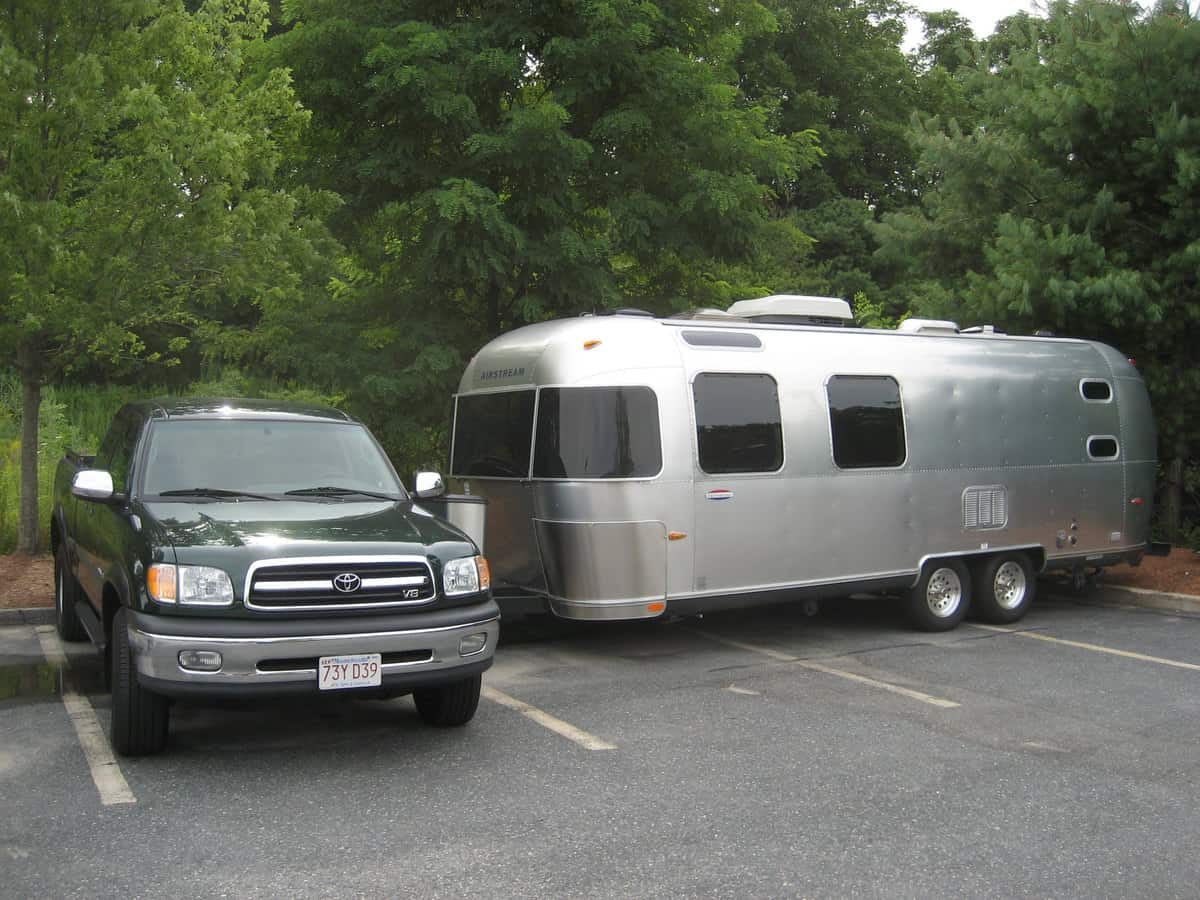
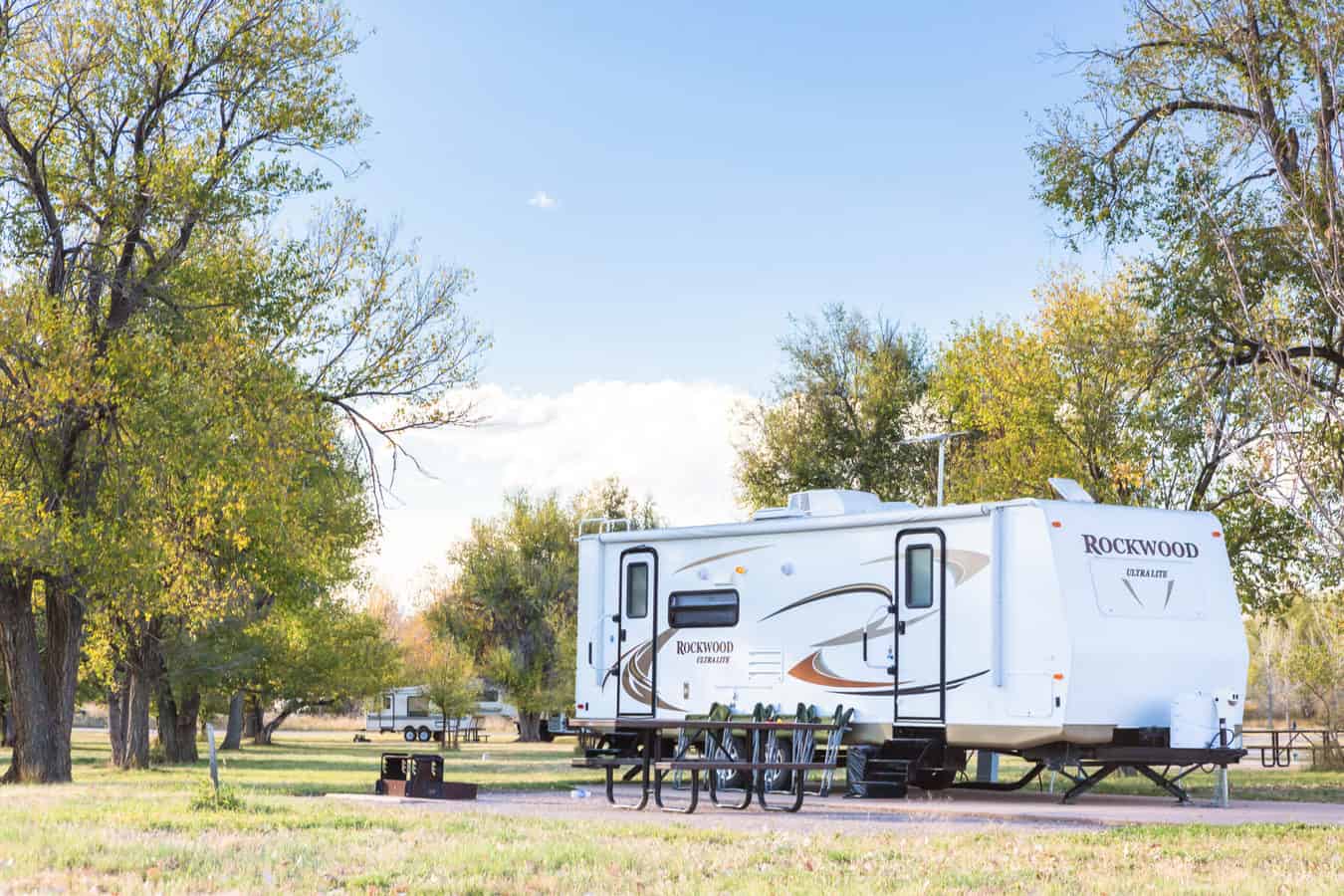
I have bought Direct Aftermarket. I transported my CRF250 without a problem on a compact SUV. Two hours a trip, of 100 miles, speeding up to 80mph. My hitch mount is low and had no problem with the ramp.
The article failed to address a very important point with these racks. These racks create the opportunity to obscure the visibility of the taillights on the rear of the RV, as a result of putting cargo on the rack. This is illegal and dangerous.
Good subject and one I’ve always marveled at. The flopping/vibrating racks attack all of the weak points and at some point, even a solid welding point can’t compete. We’ve installed a hydraulic motorcycle lift to our 30′ Class A RV which is rated to 1,000 lbs which is fine for our 600 lb BMW. But more importantly, tho this lift should never fail, how about the welding points? Our nuclear certified welder/fabricator welded it onto 4′ of the RV chassis… both sides. That’s heavy material welded into the lift, then running for a four foot section of the chassis. What’s going on hitchside might be outta sight, but it shouldn’t be outta mind!
Thank you Peggy for the ‘The Pros And Cons Of Flip-Down RV Storage Racks’ newsletter. Really good. Appreciated! Have a great day.